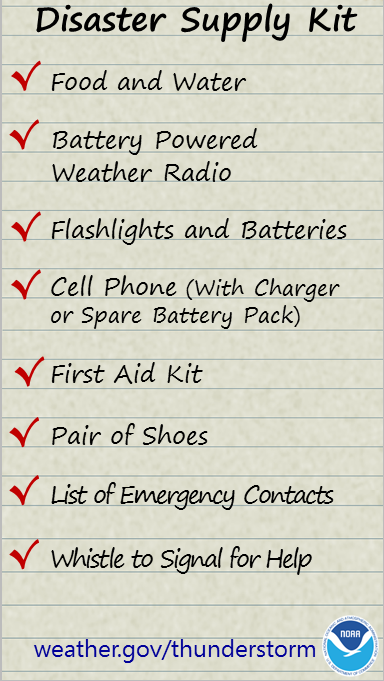Please help the National Weather Service spread these important safety messages on social media! Everyone is welcome to use the text and images provided below to help the NWS build a Weather-Ready Nation.
Facebook
A severe thunderstorm WARNING means TAKE ACTION. A severe thunderstorm WATCH means BE PREPARED. If there is a severe thunderstorm watch, stay informed and be ready to act, because severe thunderstorms are possible. If there is a severe thunderstorm warning, it means severe weather is occurring or will occur shortly. Take shelter in a strong building, and get out of mobile homes that can blow over in high winds (if not anchored correctly). weather.gov/safety/thunderstorm-ww #SummerSafety
Twitter
Warning means TAKE ACTION. Watch means BE PREPARED. weather.gov/safety/thunderstorm-ww #SummerSafety
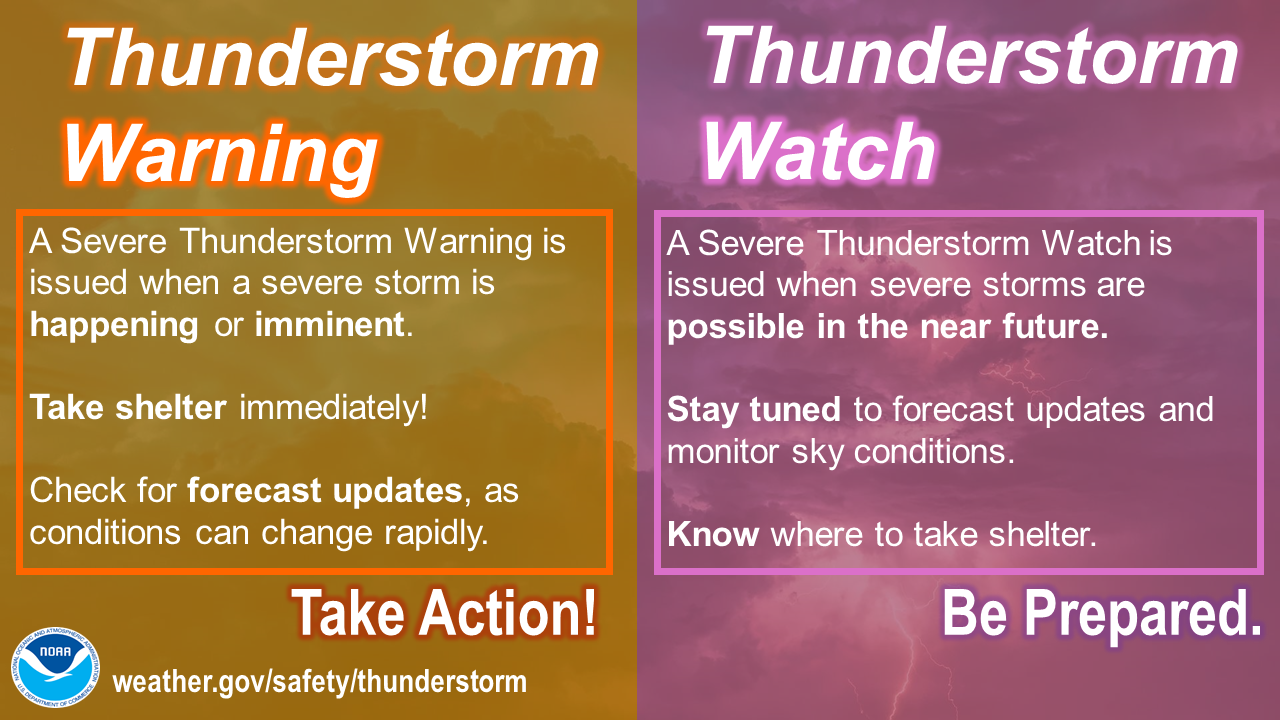
Facebook
Going camping? Watch out for thunderstorms! Know your weather forecast, and notify your family or friends of your plans. Have an evacuation plan and know where you can find shelter. Make sure to pack a safety kit and a radio for forecast updates. weather.gov/safety/thunderstorm #SummerSafety
Twitter
Going camping? Watch out for thunderstorms! weather.gov/safety/thunderstorm #SummerSafety
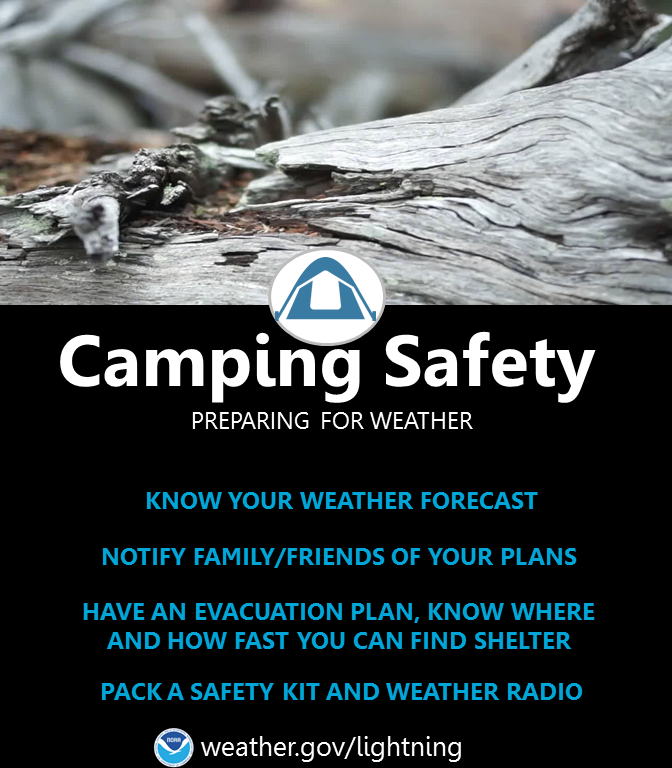
Facebook
Do you know the risk categories for severe weather? Learn the severe weather outlooks issued by the Storm Prediction Center @NWSSPC spc.noaa.gov #SummerSafety
Twitter
Know your risk for severe weather? See the Storm Prediction Center @NWSSPC spc.noaa.gov #SummerSafety
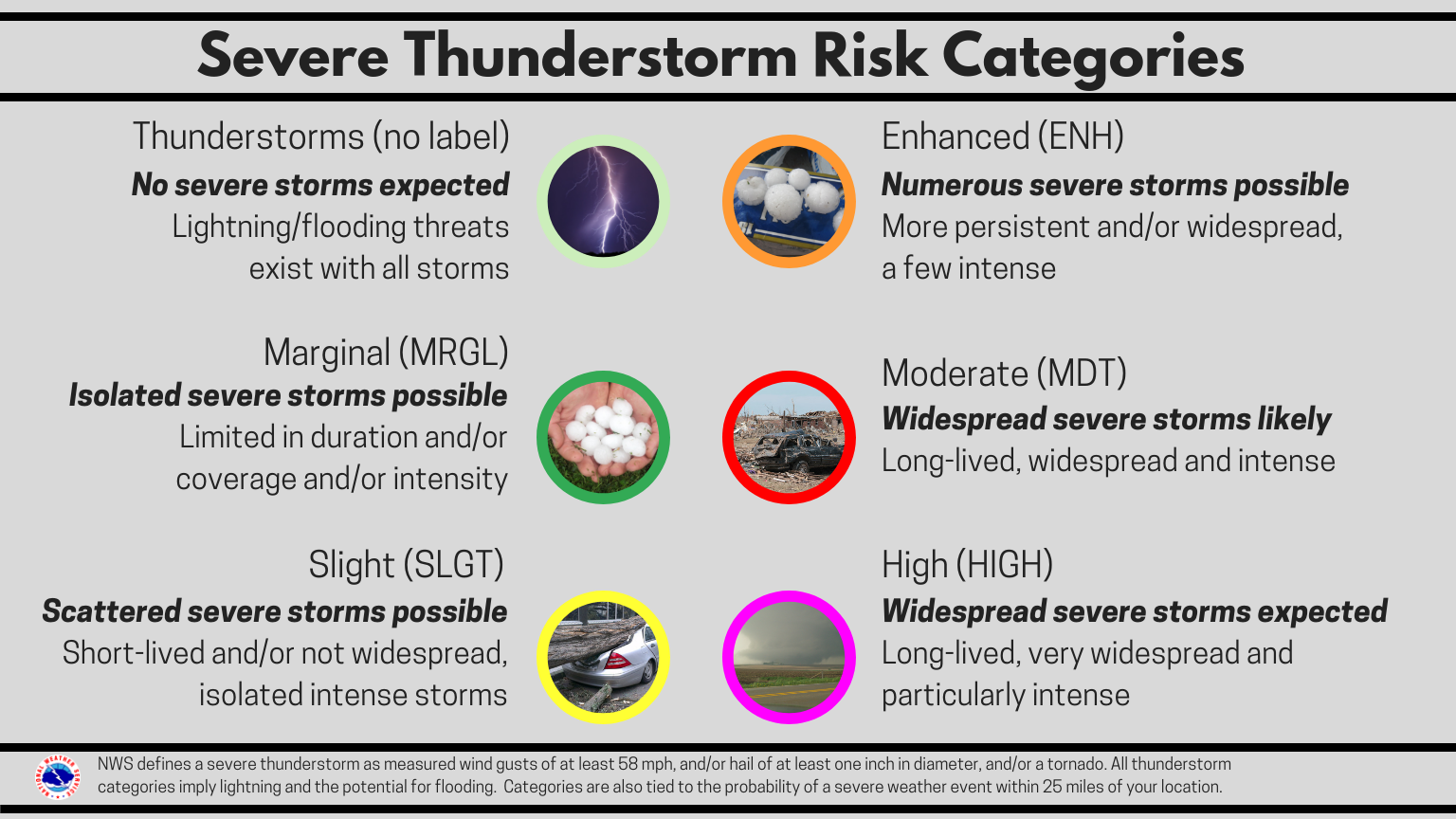
Facebook
Tornadoes, large hail, strong winds, heavy rain, and lightning are all hazards associated with severe weather. Severe weather has been reported in all 50 states, so no matter where you are, make sure you are prepared! weather.gov/safety/thunderstorm #SummerSafety
Twitter
Severe weather can occur anywhere. Wherever you are, be prepared! weather.gov/safety/thunderstorm #SummerSafety
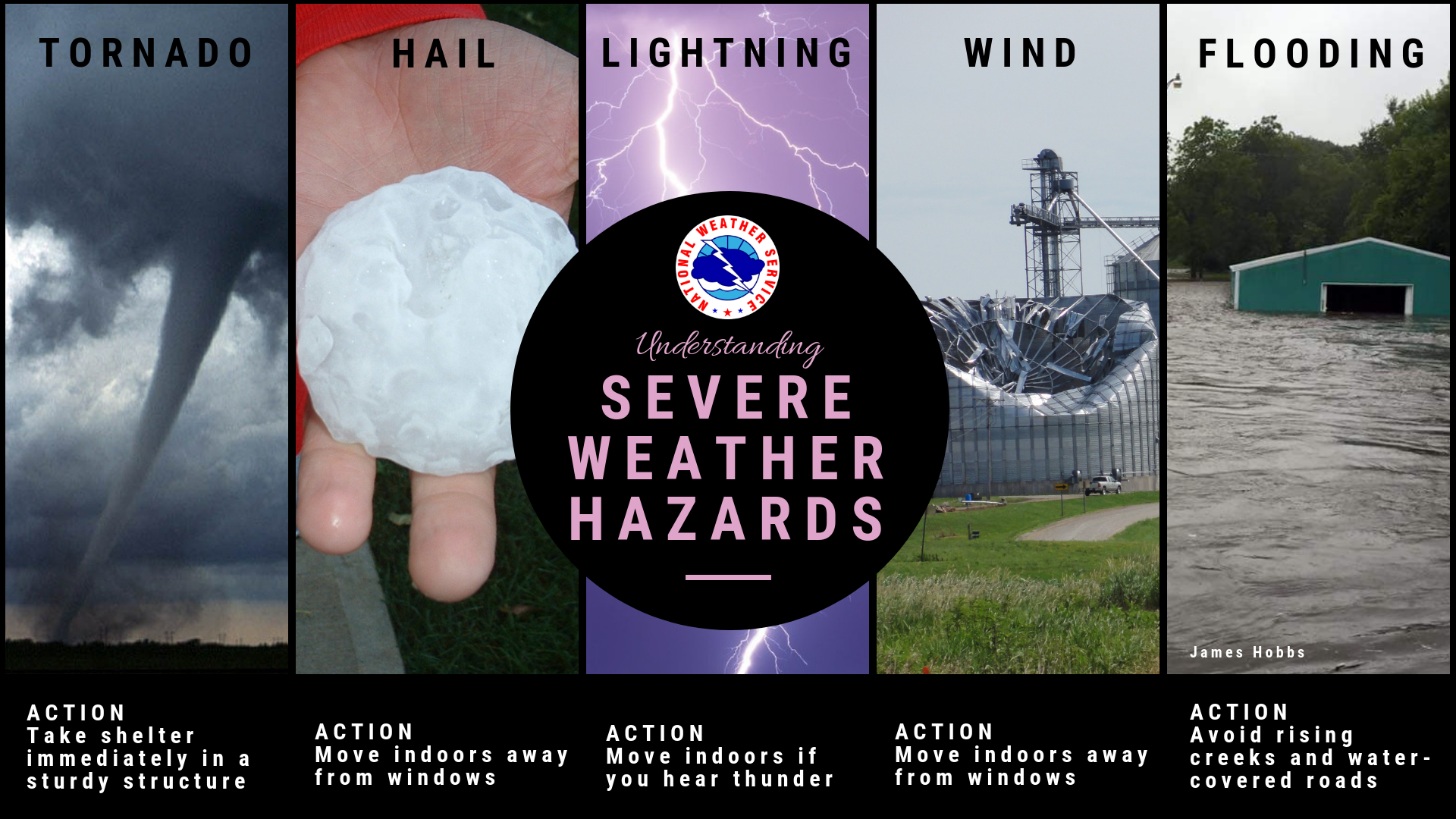
Facebook
Did you know there are different types of thunderstorms? Watch this video and learn what they are: youtu.be/NNrb0hI5JD4 #ThunderstormScience
Twitter
Did you know there are different types of thunderstorms? Watch this video and learn what they are: youtu.be/NNrb0hI5JD4 #ThunderstormScience
Facebook
"Dry thunderstorms" is a phrase used to describe thunderstorms that produce little or no precipitation at the surface. The "drier" the thunderstorm, in combination with dry fuels (i.e.vegetation) the more efficient or likely for fires to ignite by cloud to ground lightning. weather.gov/abq/clifeature2010drythunderstorms #WeatherReady
Twitter
"Dry thunderstorms" (that produce little or no precipitation at the surface), when combined with dry vegetation, can ignite wildfires. weather.gov/abq/clifeature2010drythunderstorms
Please remember to stay #WeatherReady! #SummerSafety
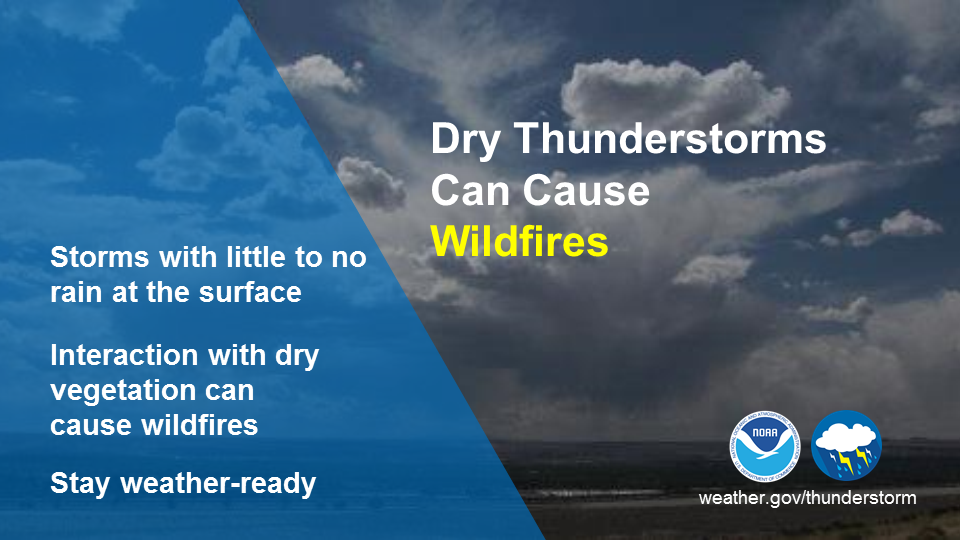
Facebook
Hail forms when updrafts (or rising air) in thunderstorms carry raindrops upward into extremely cold areas of the atmosphere, allowing the raindrops to freeze. The stronger the updraft, the bigger the hailstone can become before falling out of the storm (typically when the hailstone becomes too heavy for the updraft). Some of the largest hailstones ever recorded are the size of softballs! weather.gov/jetstream/hail #ThunderstormScience
Twitter
Hail forms when thunderstorm updrafts (or rising air) carry raindrops upward into extremely cold areas of the atmosphere. weather.gov/jetstream/hail #ThunderstormScience
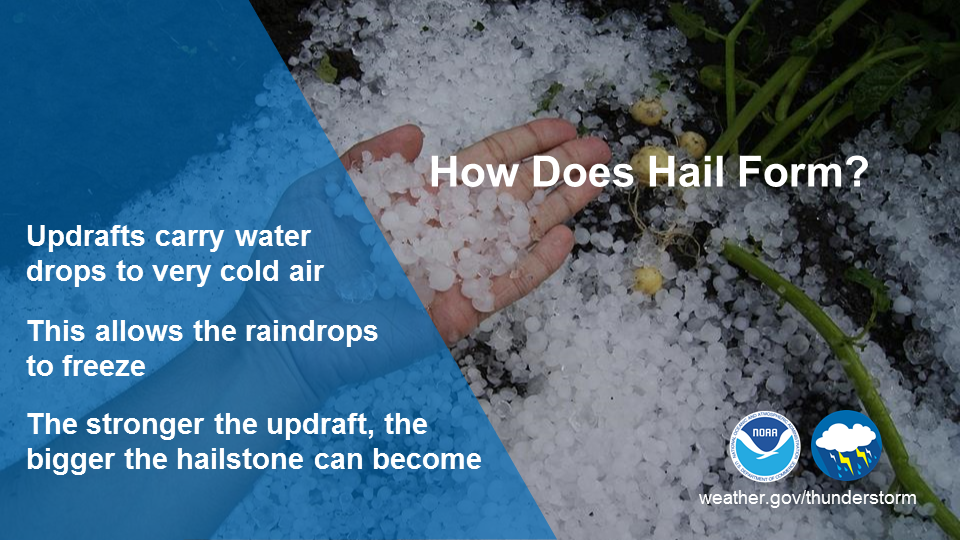
Facebook
A severe thunderstorm WARNING means TAKE ACTION. Strong, damaging winds and/or large hail are occurring or will occur shortly. When a severe thunderstorm warning is in effect for your area, move inside a sturdy structure immediately and stay away from windows and doors. Take Action! Acting early helps save lives! weather.gov/safety/thunderstorm-ww #SummerSafety
A severe thunderstorm WARNING means TAKE ACTION and seek shelter! weather.gov/safety/thunderstorm-ww #SummerSafety
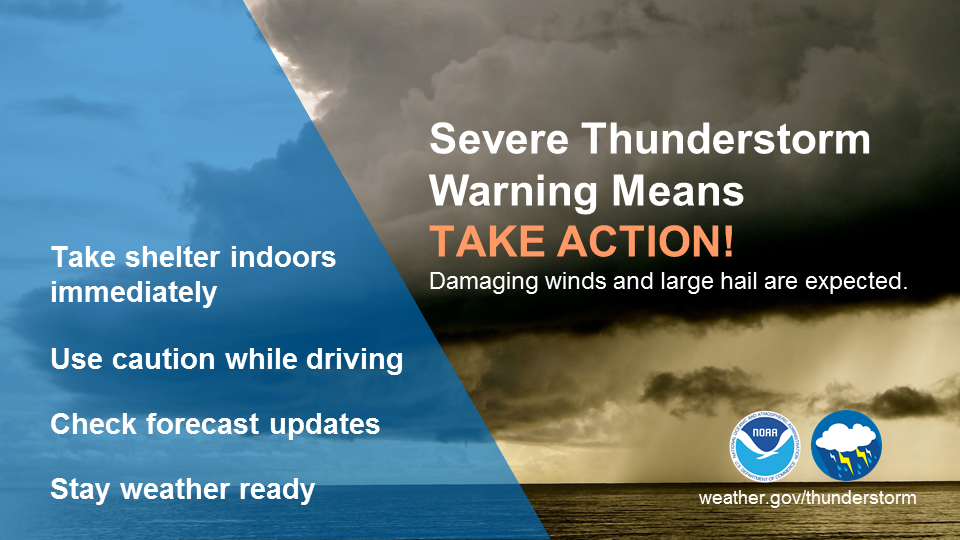
Facebook
A severe thunderstorm WATCH means BE PREPARED for the potential of strong,damaging winds and/or large hail typically within the next 3-7 hours of the watch issuance. When there is a severe thunderstorm watch, pay extra close attention to the weather and be ready to act. Preparing ahead of time helps save lives! weather.gov/safety/thunderstorm-ww #SummerSafety
Twitter
A severe thunderstorm Watch means BE PREPARED. Large hail and/or damaging wind is possible over the next few hours. Preparation helps to save lives! weather.gov/safety/thunderstorm-ww #SummerSafety
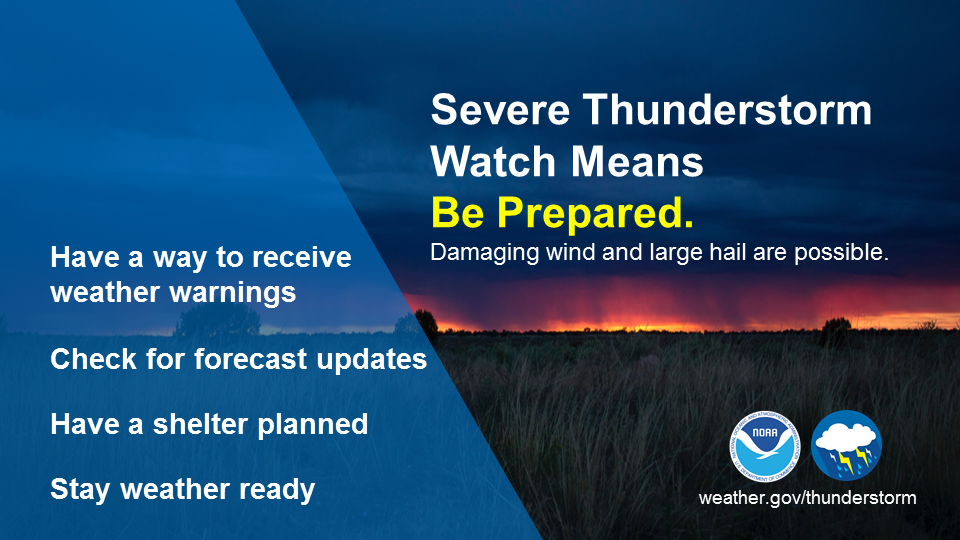
Facebook
Thunderstorms can be a mariner's worst nightmare. They can develop quickly and can produce strong wind, pounding rain, deadly lightning, and hail with very few places for shelter. Even marginal thunderstorm winds can capsize certain boats and other floating vessels. If you are out on the open water and see clouds quickly growing in the distance, it may be thunderstorms that are developing. Don’t wait until you can hear thunder or see lightning. It is best to head to port or safe shelter at the first sign of a developing storm. weather.gov/safety/safeboating-during #SummerSafety
Twitter
Boaters: When storms start to form, head to port or safe shelter immediately! weather.gov/safety/safeboating-during #SummerSafety
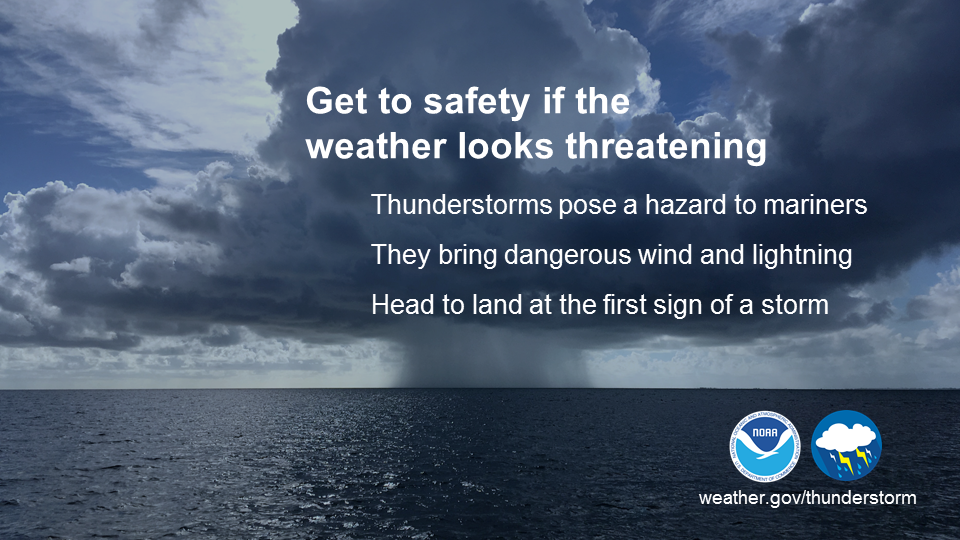
Facebook
Did you know that a 3-inch hailstone can fall to the ground as fast as 107 mph? The largest hailstone on record in the US measured 7.9 inches in diameter! Find shelter, stay indoors, and stay away from windows. weather.gov/safety/thunderstorm #SummerSafety
Twitter
Severe thunderstorms can produce damaging hail! weather.gov/safety/thunderstorm #SummerSafety
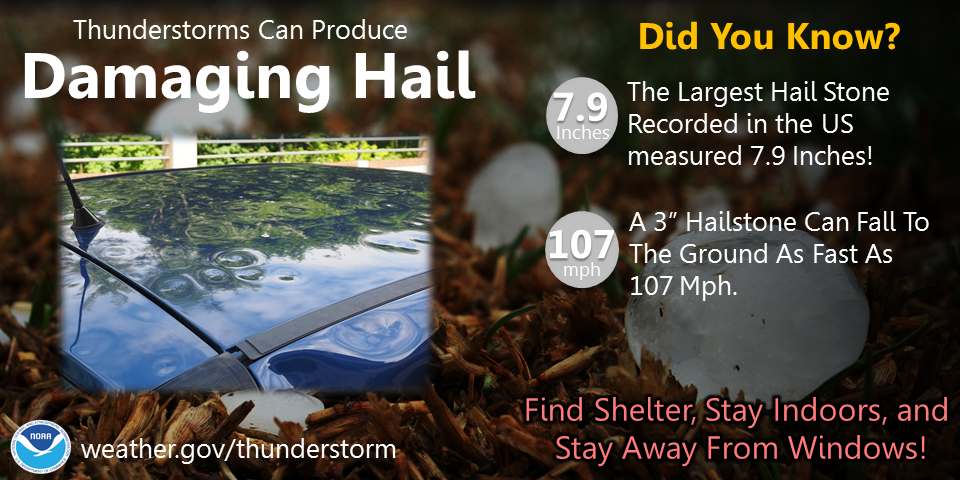
Facebook
Heading out for a day of fun on the lake? Pay attention to thunderstorm development! Make sure to check the forecast before heading out and have a portable radio in the boat to get the latest forecasts. If the skies turn threatening, head to shore! weather.gov/safety/thunderstorm #SummerSafety
Twitter
Heading out for a day of fun on the lake? Watch out for thunderstorms! weather.gov/safety/thunderstorm #SummerSafety
Facebook
Spending time outdoors? Be on the lookout for thunderstorms! Keep up with the latest @NWS forecast before you head out, and know how you will receive a thunderstorm warning if one is issued. Identify where the nearest shelter is located, and if the skies turn threatening, seek shelter immediately. weather.gov/safety/thunderstorm #SummerSafety
Twitter
Spending time outdoors? Watch out for thunderstorms! weather.gov/safety/thunderstorm #SummerSafety
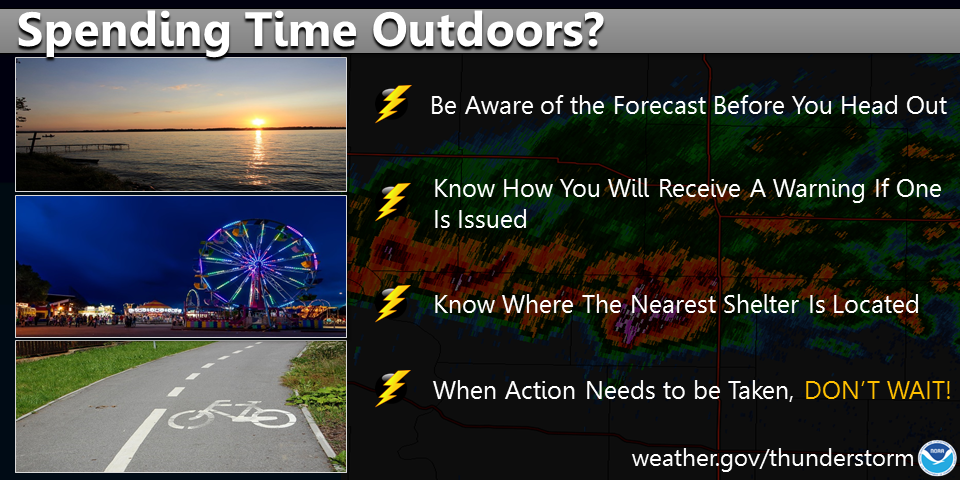
Facebook
Thunderstorms can produce heavy rain, which may lead to flooding. Watch out for water of an unknown depth - it only takes 6 inches of flowing water to knock over a person, and 12 inches to carry away a car. If you can’t see the road, Turn Around Don’t Drown! weather.gov/safety/thunderstorm #SummerSafety
Twitter
Thunderstorms can lead to flooding. Never drive through flood waters. Turn Around Don’t Drown! weather.gov/safety/thunderstorm #SummerSafety
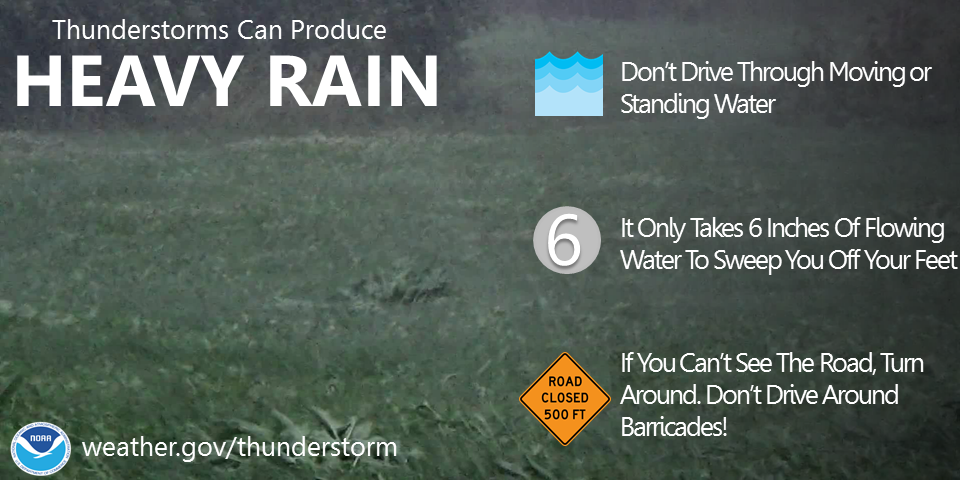
Facebook
Did you know that a 3-inch hailstone can fall to the ground as fast as 107 mph? The largest hailstone on record in the US measured 7.9 inches in diameter! Find shelter, stay indoors, and stay away from windows when severe weather strikes. weather.gov/safety/thunderstorm #SummerSafety
Twitter
Severe thunderstorms can produce damaging hail! weather.gov/safety/thunderstorm #SummerSafety
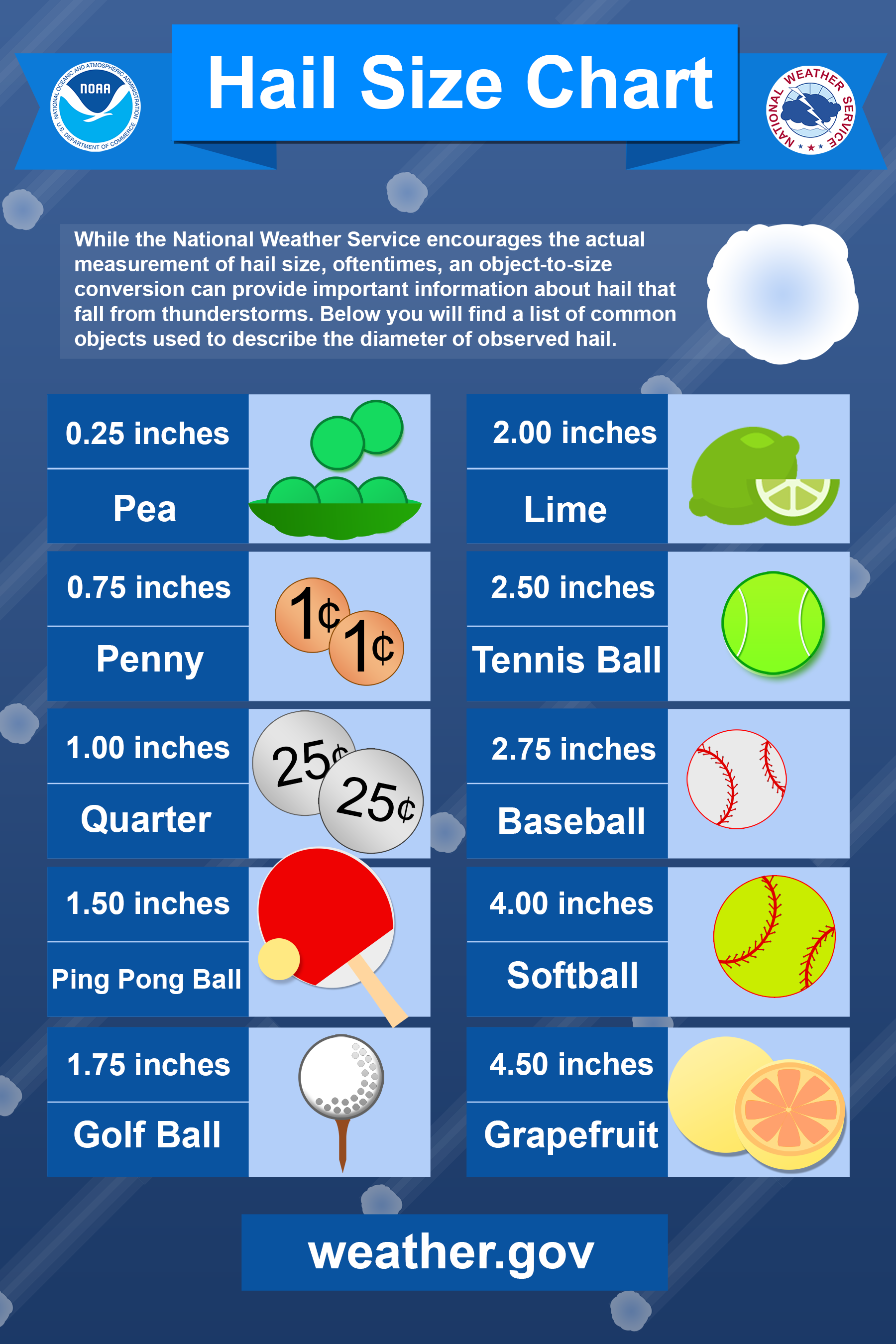
Facebook
It is extremely important to have a disaster supply kit ready before severe weather strikes. Pack food and water, a battery powered radio, flashlights and batteries, a cell phone with a spare battery pack (or a portable charger/power bank), a first aid kit, a pair of shoes/socks, a list of emergency contacts, and a whistle (to signal for help). weather.gov/safety/thunderstorm #SummerSafety
Twitter
It is important to have a disaster supply kit ready in case of thunderstorms. weather.gov/safety/thunderstorm #SummerSafety
